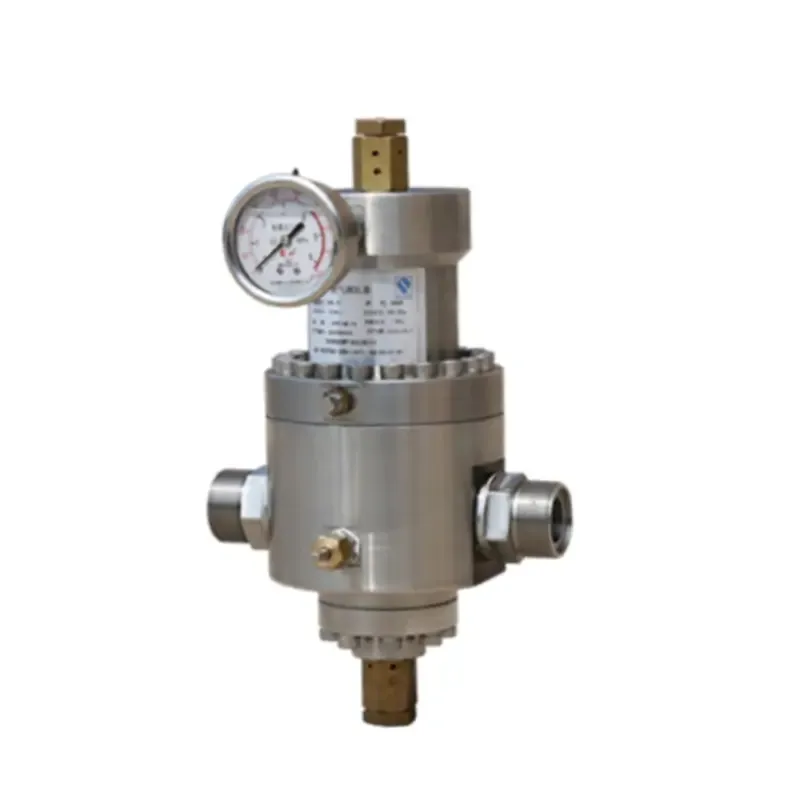
12 月 . 03, 2024 18:32
Back to list
gasification equipment
Gasification Equipment Enabling Sustainable Energy Production
Gasification is an innovative and transformative technology that converts organic or fossil-based materials into carbon monoxide, hydrogen, and carbon dioxide. This process is particularly valuable as it addresses two pressing global issues energy production and waste management. At the heart of gasification technology lies specialized equipment designed to perform this critical conversion efficiently and effectively. This article explores the types of gasification equipment, their functions, and their role in promoting sustainable energy solutions.
What is Gasification?
Gasification is a chemical process that converts carbon-containing materials, such as biomass, coal, or waste, into a synthetic gas (syngas). This syngas mainly consists of hydrogen and carbon monoxide, which can be utilized for energy production, chemical synthesis, or as a feedstock for various industrial processes. The gasification process occurs in a controlled environment, where temperature, pressure, and oxygen levels are carefully regulated to optimize the conversion of solid or liquid feedstock into valuable gases.
Types of Gasification Equipment
1. Gasifiers The core component of any gasification process, gasifiers are specialized reactors where the feedstock is subjected to high temperatures in an oxygen-starved environment. There are several types of gasifiers, including fixed-bed, fluidized-bed, and entrained-flow gasifiers, each designed to handle different feedstocks and application requirements. Fixed-bed gasifiers are typically used for larger, solid feedstock, while fluidized-bed gasifiers are adaptable for a variety of materials, including biomass and waste. Entrained-flow gasifiers operate at high temperatures and pressures, making them suitable for converting liquid feedstocks and small particle sizes.
2. Gas Cleaning Systems After gasification, the syngas produced contains impurities, such as tar, particulate matter, and sulfur compounds, which must be removed before further use. Gas cleaning systems employ a variety of technologies, including scrubbers, filters, and absorbers, to ensure that the syngas meets the required purity standards for downstream applications. These systems are essential for protecting equipment and improving the overall efficiency of energy production.
3. Heat Recovery Systems Gasification equipment often includes heat recovery systems to capture and reuse waste heat generated during the process. By capturing this thermal energy, facilities can improve their overall energy efficiency, reducing operational costs and minimizing environmental impact. Heat recovery options may include heat exchangers and steam generators, which convert excess thermal energy into electricity or utilize it for other heating applications.
gasification equipment

4. Syngas Upgrading Units In many cases, the raw syngas produced from gasification requires further upgrading or conditioning before it can be used for specific applications, such as power generation or chemical synthesis. Upgrading units may involve processes such as water-gas shift reactions, carbon capture, and purification techniques, which enhance the value and usability of the syngas.
5. Control and Monitoring Systems Advanced control and monitoring systems are integral to modern gasification facilities. These systems ensure optimal operation by continuously measuring various parameters, such as temperature, pressure, and gas composition. Automated controls help maintain the stability of the gasification process and enhance safety, efficiency, and reliability.
Role of Gasification Equipment in Sustainable Energy Production
The adoption of gasification technology and its associated equipment plays a vital role in promoting sustainable energy production. By transforming waste materials, such as agricultural residues and municipal solid waste, into valuable energy resources, gasification helps reduce landfill usage and mitigate environmental pollution. Furthermore, the ability to utilize a wide range of feedstocks makes gasification a versatile solution for achieving energy independence and diversifying energy sources.
Gasification also contributes to a circular economy by facilitating the energy recovery from waste, thus closing the loop between energy consumption and waste management. The syngas produced can be converted into electricity, heat, or fuels, providing flexible options for energy deployment and enhancing the resilience of energy systems.
Conclusion
Gasification equipment represents a key technology for transitioning to a more sustainable and circular economy. By enabling the efficient conversion of various feedstocks into clean energy, gasification holds the promise of addressing some of the world’s most pressing energy and environmental challenges. As technology continues to advance, investment in gasification infrastructure and equipment will be crucial for fostering a sustainable future.
Next:
Latest news
-
Unlocking The Quality Gas Pressure ReducersNewsNov.01,2024
-
The Role of Gas Pressure Reducing StationsNewsNov.01,2024
-
The Importance and Functionality of Safety Relief ValvesNewsNov.01,2024
-
The Essential Role of Safety Valves in Natural Gas ApplicationsNewsNov.01,2024
-
The Essential Role of Gas Pressure RegulatorsNewsNov.01,2024
-
Enhance Your Premium Gas FiltersNewsNov.01,2024

